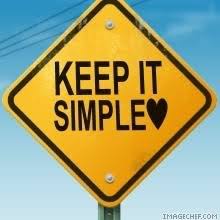CONTENTS
Cover Title Page
Instructions for use
HOW TO IMPROVE YOURSELF
The Eisenhower matrix: How to work more efficientiy
The SWOT analysis: How to find the right solution
The BCG box: How to evaluate costs and benefits
The project portfolio matrix: How to maintain an overview
The John Whitmore model: Am Ipursuing the right goal?
The rubber band model: How to deaf with a dilemma
The feedback model: Dealing with other people's compliments and criticisms
The family tree model: The contacts you shouid maintain
The morphological box and SCAMPER: Why you have to be structured to be creative
The Esquire gift model: How much to spend on gifts
The consequences model: Why it is important to make decisions prompt/y
The conflict resolution model: How to resolve a conflict elegantly
The crossroads model: So what next?
HOW TO UNDERSTAND YOURSELF BETTER
The flow model: What makes you happy?
The Johari window: What others know about you
The cognitive dissonance model: Why people smoke when they know it's unhealthy
The music matrix: What your taste in music says about you
The unimaginable model: What do you believe in that you cannot prove?
The Uffe Elbaek model: How to get to know yourself
The fashion model: How we dress
The energy model: Are you living in the here and now?
The SuperMemo model: How to remember everything you have ever learned
The political compass: What political parties stand for
The personal performance model: How to recognise whether you should change your job
The making-of model: To determine your future. first understand your past
The personal potential trap: Why it is better not to expect anything
The hype cycle: How to identify the next big thing
The subtle signals model: Why nuances matter E The network taraet model: What vour friends sav abo
The network target model: What your friends say abo'Ut you
The superficial knowledge model: Everything you don need to know
HOW TO UNDERSTAND OTHERS BETTER
The Swiss cheese model: How mistakes happen
The Maslow pyramids: What you actually need. what you want
Thinking outside the box: How to come up with brilliant ideas
The Sinus Milieu and Bourdieu models: Where you belong
The double-loop learning model: How to learn from your mistakes
The Al model: What kind of discussion type are you?
The small-world model: How arm” the world really is
The Pareto principle: Why 80 per cent of the output is achieved with 20 per cent of the input
The long-tail model: How the internet is transforming the economy
The Monte Carlo simulation: Why we can only approximate a definitive outcome
The black swan model: Why your experiences don make you any wiser
The chasm - the diffusion model: Why everybody has an iPod
The black box model: Why faith is replacing knowledge
The status model: How to recognise a winner
The prisoner's dilemma: When is it worth trusting someone?
HOW TO IMPROVE OTHERS
The Drexler-Sibbet team pedormance model: How to turn a group into a team
The team model: Is your team up to the job?
The gap-in-lhe-market model: How to recognise a bankabfe idea
The Hersey—Blanchard model (situational leadership): How to successfully manage your employees
The role-playing model: How to change your own point of view
The result optimisation model: Why the printer always breaks down just before a deadline
The world's next top model
NOW IT'S YOUR TURN Drawing lesson 1 Drawing lesson 2
My models
APPENDIX Bibliography Illustration credits Final note Thanks
The authors



 =
=



.png)
